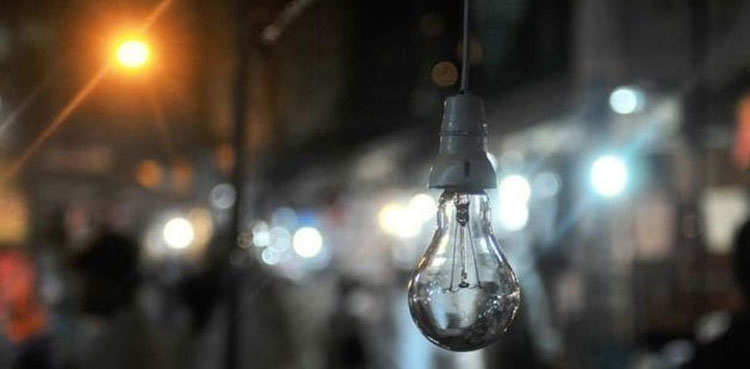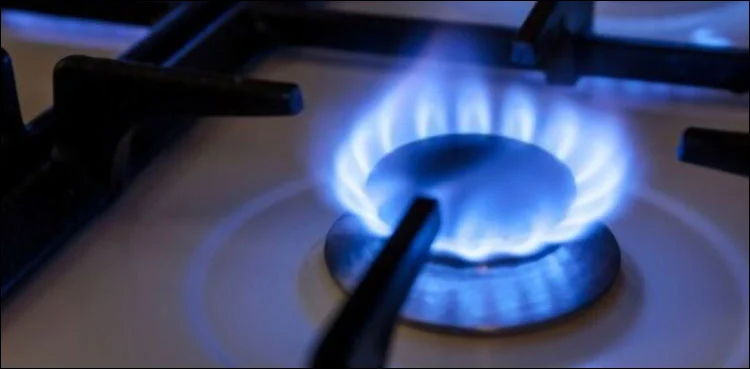Pakistan's Energy Sector During FY2022-23 And The Future!
- By Web Desk -
- Jun 09, 2023

After the release of Pakistan Economic Survey, the coalition government unveiled growth figures for all sectors including the vital energy sector of Pakistan.
Energy is an integral component of the economy and is considered necessary for nearly all human activities.
Recent decades have witnessed a rapid increase in the global energy demand that is primarily derived from the expansion of economic activities, population growth, and rapid technological change. However, energy supply bottlenecks become a chronic problem for a country’s economy.
Pakistan also suffered from such a situation in the past. Therefore, several large-scale projects were initiated between 2013 and 2018 to eliminate the demand supply electricity gap and address the challenge of ensuring the smooth delivery of energy services.
To this end, the government played a significant role in abridging severe energy demand imbalance by importing Liquefied Natural Gas (LNG).

POWER SECTOR
Installed Capacity and Generation of Electricity
The country’s total installed electricity capacity stands at 41,000 MW; the percentage share of hydel, thermal, nuclear, and renewable is 25.8 percent, 58.8 percent, 8.6 percent, and 6.8
percent, respectively.
The share of thermal as a dominant source of electricity supply has declined over the past few years, showing the increased reliance on indigenous sources.
On the other hand, against total electricity generation of 94,121 GWh, the share of hydel, nuclear, and renewable is combined as 53.8 percent, which is a good sign for the economy and the environment.
Electricity Consumption
During FY2023 (July-March), total electricity consumption is 84,034 GWh. The household sector is the largest consumer of electricity, consuming 39,200 GWh (46.6 percent), followed by the industrial sector with 23,687 GWh (28.2 percent).
Moreover, agriculture and commercial sectors consume 6,906 GWh (8.2 percent) and 6,576 GWh (7.8 percent), respectively, whereas the electricity consumption in other sectors (streetlights, general services, and other government) is 7,664 GWh (9.1 percent).

THE FUTURE
Alternative Energy Development Board (AEDEB) The government is working to bring transformational change in the power system to ensure affordability, sustainability, energy security, and universal energy access. Accordingly, the government prioritizes utilizing indigenous, clean energy generation resources and encouraging alternative and renewable technology.
Currently, 36 wind power projects of 1,835 MW, 7 solar projects of 530 MW, and 8 sugar mill-based bagasse cogeneration plants of 259.1 MW are operating ARE-based projects. Among several ARE projects, 3 solar projects of 150 MW, started under the RE Policy 2006, are expected to complete within the outgoing fiscal year.
Besides, 1 bagasse project of 32 MW is expected to complete in January 2024. AREs account for 6.8 percent of electricity’s installed capacity due to concentrated efforts.
However, ARE can increase the national energy supply mix and assure universal and inexpensive power access nationwide.
Based on IGCEP findings, the government aims to generate 60 percent of its generation capacity using indigenous clean energy technologies (ARE and hydro) by 2030. The base case of NTDC’s plan IGCEP 2022, currently pending approval by NEPRA, estimates the country’s demand at 41,338 MW and installed capacity at 69,372 MW by 2031.
It also adds 13,278 MW of solar (8,350 MW) and wind (4,928 MW) capacity by 2031, increasing their power mix shares to 20 percent and 10 percent, respectively. AEDB prepared the Request for Proposal (RFP) packages for competitive bidding for wind and solar projects and made NEPRA-required amendments. NEPRA will determine the benchmark tariff for the competitive bidding.
Nuclear Energy
Pakistan became a nuclear power producer in 1972 when KANUPP, a 137 MW nuclear power plant in Karachi, began operations. The Pakistan Atomic Energy Commission (PAEC), the only institution in Pakistan authorized to exploit the vast atomic energy generated by splitting nuclei, developed and ran it.
After fifty years, KANUPP was shut down in August 2021, but its infrastructure and understanding helped Pakistan build a reliable nuclear power program.
The rejuvenation of nuclear power in Pakistan began at the end of the last century, when KANUPP was almost three decades old, due to Pakistan’s inclusion in the list of countries denied nuclear technology transfer.
Now the nuclear fleet consisting of 6 NPPs is worth 3,530 MW. Four units (C-1 and C-2, each of 325 MW, and C-3 and C-4, each of 340 MW) are currently operational in Chashma, Mianwali, while two plants (K-2 and K-3), each with a capacity of 1100 MW are operational in Karachi.
Prime Minister Shehbaz Sharif formally inaugurated K-3 on 2nd February 2023. While KANUPP was a Pressurized Heavy Water Reactor (PHWR) constructed with the help of Canada, the new generation of nuclear plants is all Pressurized Water Reactor (PWR), designed and constructed with the assistance of China.
One more plant of 1,100 MW capacity, destined to be installed at Chashma, is in its planning phase. Nuclear Power plants (NPPs) have the unique characteristic of operating for about 18 months with no additional fuel.
Moreover, fuel for another 18 months can be stored on the plant site without additional infrastructure costs. Therefore, it makes them invulnerable to short-term price fluctuations or supply chain disruption resulting in very high-capacity factors. The 6 NPPs supplied about 18,739 million units of electricity to the national grid from July-March FY2023.
In December 2022, the uninterrupted electricity supply from NPPs was about 27 percent of the total electricity supplied in the national grid.

Substitution of Expensive Imported Fossil Fuels with Solar PV Energy
Under the initiative, Solar PV-based power generation capacity shall be solicited to substitute expensive imported fossil fuels used for power generation that will lower the average
basket cost of generation for the system.
The government plans to add approximately 6,000 MW of solar PV capacity under this initiative. In the first phase, for a solar PV project of 600 MW capacity at Kot Addu, District Muzaffargarh, NEPRA has approved the RFP and Security Package Documents (SPDs), including the Energy Purchase Agreement (EPA) and the IA on 1 st February 2023.
The benchmark tariff is also determined for the competitive bidding of this project.

Solar PV Generation on 11 kV Feeders
Decentralized, medium-scale Solar PV power can contribute cost-efficiency to alleviate some
of these problems by feeding directly into the medium-voltage (MV) network, thereby improving the local losses, power outages, and voltage situation.
Furthermore, the injection of Solar PV power into the MV network would provide cheap electricity to the national grid without any augmentation or significant upgrade of the grid infrastructure.
Accordingly, solar PV projects of suitable capacity up to a maximum of
4 MW will be procured through competitive bidding at an 11 kV feeder level. The standard RFP and EPA are already prepared for developing small solar projects of up to 4 MW capacity at feeder level across the country.
Furthermore, these documents have been shared with all DISCOs for approval from their Boards. Then, it will be processed for competitive bidding on identified feeders upon approval of RFPs and determination of benchmark tariff by NEPRA.
Solarization of Public Buildings
Solarization of public buildings will help meet a specific portion of the electricity load through
clean energy technology, reduce electricity bills of public offices, and relieve electricity
utilities/distribution companies from long-term dues.
Under this initiative, building-specific Solar PV net-metering-based systems will be installed through bidding on Lease (10-year BOOT basis) and the Own-cost models. AEDB has been tasked to carry out the solarization of public buildings through competitive bidding on
behalf of public sector entities.

Oil Sector
The total demand for petroleum products remained at 23.1 million tonnes during FY2022.
However, this year witnessed a decline in demand to 13.1 million tonnes during July-March FY2023 from 16.7 tonnes in July-March FY2022.
The declining trend may be attributed to a decrease in demand for FO, HSD, MS, and High Octane Blended Component (HOBC), which comprises more than 95 percent of the total demand.
Furthermore, the transport and power sectors are major petroleum consumers, covering around 90 percent of total demand. On the other hand, the only increase is in Jet Fuel’s (JP-1 and JP-8) demand, which has grown 18 percent this year. As such, the demand for petroleum products decreased in all sectors ranging from 5.3 percent to 45.4 percent, except the overseas demand.
The decrease in MS and HSD demand may be attributed to the high prices and the decline in FO demand due to shifting power generation from FO/HSD to RLNG/Coal and other alternative sources.
Overall, the total demand for petroleum products decreased by 21.9 percent during July-March FY2023 compared to FY2022.
Pakistan is an importer of petroleum products and crude oil. Imports of petroleum products during July-March FY2023 are around 6.1 million tonnes, valued at more than US$ 5.7 billion.
The major imported products are MS, HSD, and FO, with import quantities of 3,853.9 thousand tonnes, 1,645 thousand tonnes, and 530.6 thousand tonnes, respectively. As such, this year witnessed a significant decrease in imports of all five petroleum products.
The country’s reliance on FO for power generation declined that leading to 530.6 thousand tonnes of imports during July-March FY2023 against 1,318.2 thousand tonnes for the comparative period of FY2022, whereas the total imports of FO were 2,258.2 thousand tonnes in FY2022. The crude oil import requirement of refineries during July-March FY2023 remained at 5,858.4 thousand tonnes, which was 6,802.3 thousand tonnes during the same period of FY2022. Furthermore, the total import requirement for crude oil was 9,284.6 thousand tonnes for FY2022.

Gas Sector
Natural Gas’s indigenous supplies contribute about 29.3 percent (FY2021) of the country’s total primary energy supply mix. Pakistan has an extensive gas network of over 13,775 Km Transmission, 157,395 Km Mains, and 41,352 Km Services gas pipelines to cater to the requirement of more than 10.7 million consumers across the country.
The government has been pursuing its policies for enhancing indigenous gap production and imported gas to meet the increasing energy demand in the country. Currently, the capacity of two FRSUs to RLNG is 1,200 MMCFD.
Accordingly, RLNG is being imported to mitigate the gas demand-supply shortfall.
During July-March FY2023, the average natural gas consumption was about 3,258 MMCFD, including 631 MMCFD volume of RLNG.
During the same period, the two Gas utility companies (SNGPL and SSGCL) laid a 225 Km gas transmission network, 1,170 Km Mains, and 63 Km service lines and connected 92 villages/towns to the gas network. Furthermore, 7,102 additional gas connections (including5,068 domestic, 1,948 Commercial, and 86 Industrial) were provided nationwide.
Natural gas is expected to supply approximately 520,801 new consumers (this target is subject to approval/revision by OGRA) during FY2024.
In addition, gas utility companies have planned to invest Rs 38,674 million in transmission projects, Rs 47,700 million in distribution projects, and Rs 9,416 million in other projects bringing the total investment to Rs 95,790 million during FY2024.
Currently, the two LNG terminals are operational with OGRA licenses granted in 2016 and 2018 to M/s Engro Elengy Terminal Limited (EETL) and M/s Pakistan GasPort Consortium Limited (PGPCL), respectively.
Further, OGRA granted construction licenses in April 2021 to develop LNG terminals at Port Qasim Karachi.
LPG plays an important role in the energy mix of Pakistan as it provides a cleaner alternative to biomass-based sources, especially in locations where natural gas is unavailable.
During July-January FY2023, the total supply of LPG stood at 843,878 tonnes, wherein 79.6 percent was met through imports. Currently, 11 LPG producers and 273 LPG marketing companies operate in the country with more than 7,000 authorized distributors.
Furthermore, an investment of approximately Rs 2.75 billion is made during July-March FY2023.
